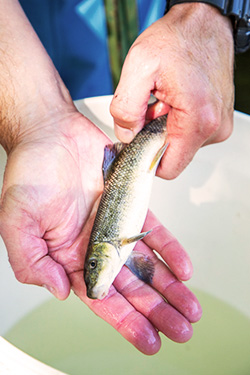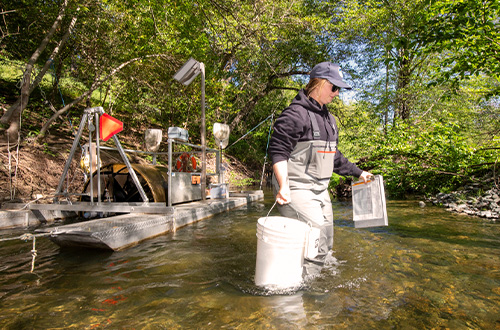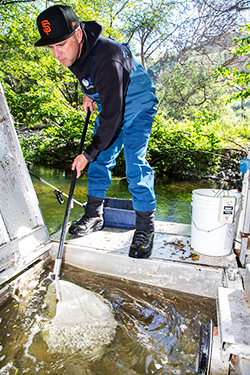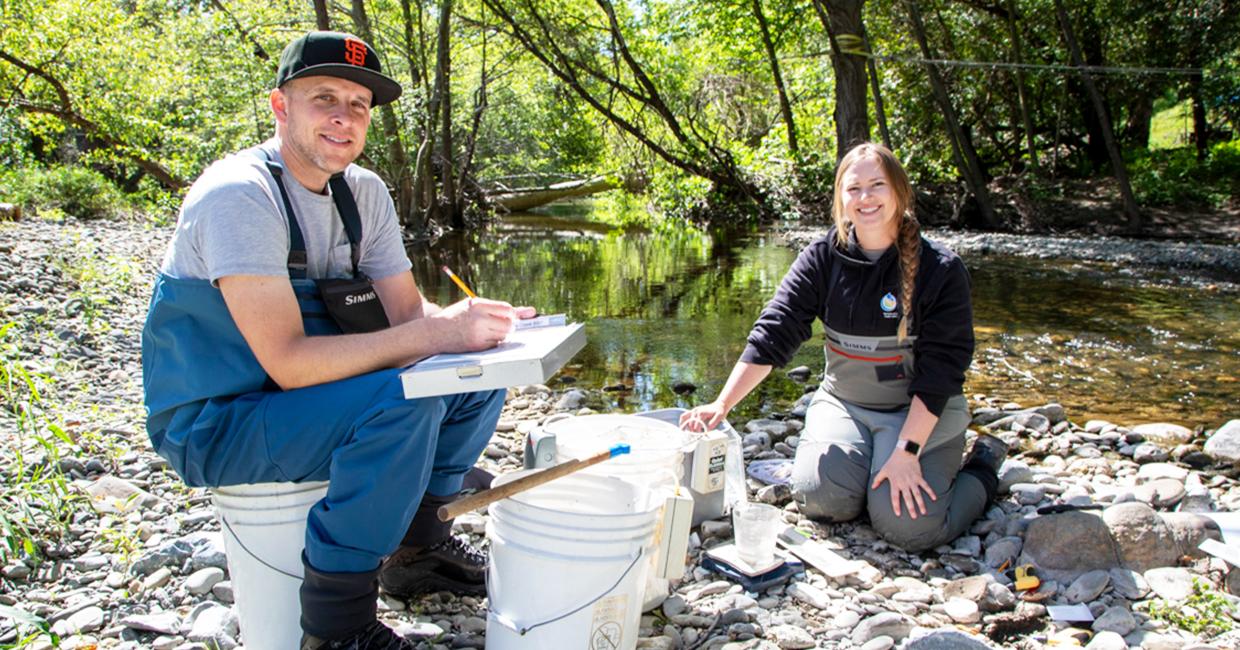Everybody loves a comeback story. The hero rebounds back from profound loss to triumph in the end. The hero of our story has gills.

Let’s start at the beginning. The San Francisco Public Utilities Commission (SFPUC) owns 38,000 acres of land in the Alameda Creek Watershed. Spanning Alameda and Santa Clara County, these lands were purchased by the Spring Valley Water Company starting in the mid 1800’s. The SFPUC has added to this number over the last 15 years by purchases from the Watershed and Environmental Improvement Program. These lands have been protected as an important source of high-quality drinking water and unique ecological values ever since.
When Spring Valley Water Company staff started construction of water facilities in the watershed, it was said that the watershed likely supported one of the largest historical steelhead runs in the San Francisco estuary. Steelhead trout are anadromous – they migrate up freshwater streams to spawn and can return to the ocean; their offspring rear in freshwater, then migrate to the ocean to complete their life cycle.
Fish Ladder Project
Development and the construction of dams and other barriers to passage have greatly reduced the steelhead population on Alameda Creek. Steelhead have not been able to migrate upstream from the ocean and bay to the watershed for more than 50 years. That changed in April 2022, when the Alameda County Water District completed its fish ladder project, which effectively opened up Alameda Creek to steelhead once again.
The SFPUC has worked for decades to improve habitat for steelhead. This includes removal of two dams, water releases from the New Calaveras Reservoir since 2019, and construction of a fish ladder over one of the smaller dams. The SFPUC also have worked for more than 20 years with a multi-agency stakeholder group called the Alameda Creek Fisheries Restoration Work Group to collaborate on a watershed-wide approach to steelhead restoration.

Fish Trapping & Tracking Program
One tool to track progress on steelhead restoration is the fish trapping and tracking program. Every year since 2015, from February through May or June, SFPUC biologists use traps in Alameda Creek to track the movement of juvenile steelhead migrating down from the upper reaches of the watershed. Biologists gently weigh, take scale and tissue samples and implant a transponder the size of a grain of rice in the fish before they let them return to their migration. The transponders in the fish act like a FastTrak transponder. When that fish passes certain antennas placed in the creek, the unique transponder in the fish will ping, alerting biologists of its presence.
This year, SFPUC trapping biologists have seen a huge increase in the number of steelhead migrating out towards the ocean. Between 2015 and 2023 while conducting fish trapping surveys, SFPUC biologists captured and released a total of 295 steelhead on Alameda Creek. This year alone, while conducting fish trapping surveys, SFPUC biologists monitored, captured, and released 2,588 steelhead.
“We are currently seeing fish densities that we haven’t seen before," said Supervising Biologist, Scott Chenue. "It is very demanding for the biologists to keep up with trapping and tagging, but this is the problem we have hoped to have. To see these healthy fish all migrating downstream. It’s very rewarding and uplifting. It’s dramatic.”

This could be because of years of water releases from New Calaveras Reservoir to restore and enhance spawning and rearing habitat. It could be because of Calaveras Reservoir spilling over its spillway in 2023 which might have sent previously landlocked steelhead into the creek. It might be because of the absence of barriers to movement within the watershed. Or it could be a combination of these factors.
Whatever the reason, 50 of these out-migrating steelhead have already made their way past Alameda County Water District’s fish ladder on their way to the ocean. We know this because the antennae on the ladder detected them. Alameda County Water District biologists, who are also part of the Fisheries Work Group, alerted the SFPUC.
Biologists hope to see these fish again on their return journey into the watershed to spawn in a few years’ time as adults. They also hope to continue to see large numbers of juvenile steelhead making their way down Alameda Creek to the ocean. Steelhead are a bellwether species for the Alameda Creek Watershed. They are a valuable species for tracking the health of the watershed and its ability to produce high quality water. Restoring a native population of migrating steelhead to the watershed is priceless.
“It’s amazing to see the steelhead population increase and them potentially returning to Alameda Creek," said Biologist, Randy Renn. "I’ve been with the City and County of San Francisco for 15 years, and we’ve been doing background monitoring this entire time. It is awesome to see an increase in the population after our water releases and restoration of passage downstream. For me and for the next generations to come. The interagency working group and the volunteers who have come out have all helped to bring this to fruition. It is really an honor to be involved in it.”


